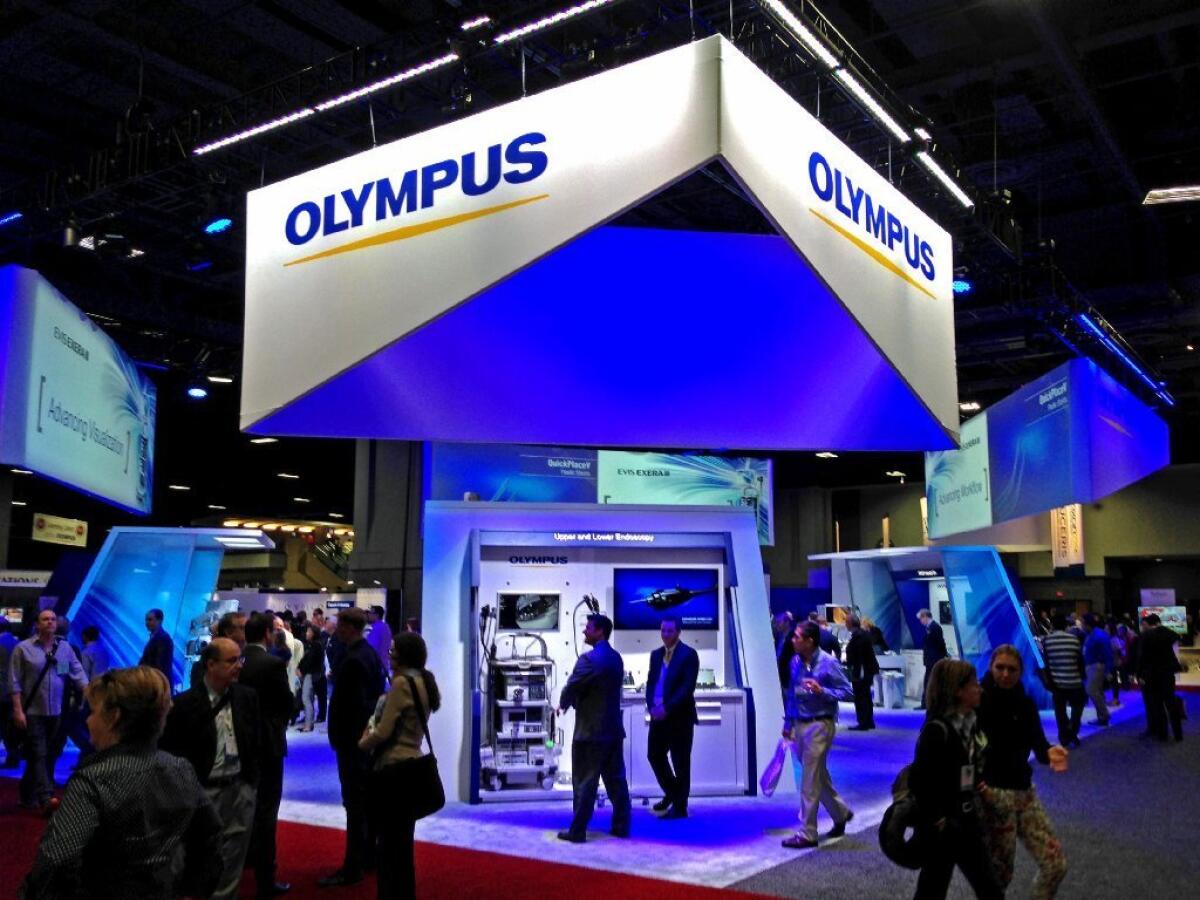Scope maker Olympus investigates Pasadena infections, denies FDA violation

- Share via
Medical scope maker Olympus Corp. said Thursday that it has reached out to a Pasadena hospital that suspects the company’s devices spread a superbug infection to at least three patients.
The Japanese company is also disputing a report this week from the Food and Drug Administration that it waited three years to tell authorities about 16 patient infections in 2012.
Wednesday, The Times first reported that Huntington Memorial Hospital in Pasadena was investigating a potential link between patients infected with an antibiotic-resistant strain of the pseudomonas bacteria and the Olympus duodenoscopes used to treat them.
The hospital said it discovered the problem in June after reviewing lab samples, and then it notified affected patients and local health authorities. Huntington Memorial said it hadn’t confirmed that the scopes were the source of the infections.
Mark Miller, an Olympus spokesman, said the company was investigating the incident. “We are reaching out to Huntington Memorial to better understand the situation,” he said.
Los Angeles County and city of Pasadena health officials have been looking into the hospital incident as well.
A spate of superbug infections tied to contaminated scopes has been reported at hospitals across the country, including in Los Angeles, Seattle, Pittsburgh and outside Chicago.
Not including the Pasadena incident, the FDA has said that six of the nine recent outbreaks were linked to Olympus scopes, including one at UCLA’s Ronald Reagan Medical Center. The company is the market leader for specialty endoscopes with about 85% of the U.S. business.
Fujifilm and Pentax Medical also sell similar duodenoscopes. All three scope makers have come under scrutiny from the FDA and the U.S. Justice Department for their role in these bacterial infections.
Monday, the FDA issued warning letters to all three manufacturers for a range of quality- and safety-related violations.
Olympus initially said it was reviewing the warning letter and forming a response.
Subsequently, the company refuted one of the FDA’s primary allegations, that it didn’t disclose some infections for three years. Under federal rules, companies are supposed to report potential injuries and deaths related to their devices to the FDA within 30 days.
Olympus said it did file a report with the FDA in May 2012 about the 16 infected patients shortly after it learned about them. It submitted additional injury reports three years later that had more information, such as an increase in the number of affected patients to 22.
“We are committed to addressing the issues identified in the [FDA] letter,” Miller said. “For example, we are currently working to improve our [medical device reporting] system.”
An FDA spokeswoman said the agency wouldn’t comment further about the warning letters.
All three companies have 15 business days from receipt of the Aug. 12 letters to respond to the violations cited by the FDA and detail any steps being taken to remedy them.
Duodenoscopes are used in a procedure known as ERCP, or endoscopic retrograde cholangiopancreatography.
During the procedure, the flexible scope is put down a patient’s throat to diagnose and treat problems in the digestive tract. Nearly 700,000 such procedures are performed annually in the U.S.
The FDA has said duodenoscopes should remain on the market because “for most patients the benefits of ERCP outweigh the risks of infection.”
Twitter: @chadterhune
ALSO:
The human ‘superpredator’ is unique -- and unsustainable, study says
Jeb Bush defends saying ‘anchor babies’ as Democrats attack him
July was the warmest month on Earth in 136 years, NOAA says
More to Read
Inside the business of entertainment
The Wide Shot brings you news, analysis and insights on everything from streaming wars to production — and what it all means for the future.
You may occasionally receive promotional content from the Los Angeles Times.











